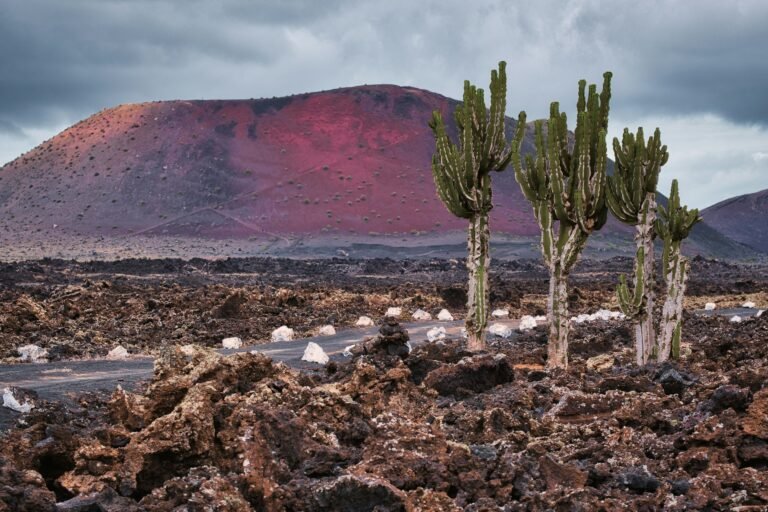Kora Star: Unveiling the Mysteries of a Celestial Marvel
The universe, vast and mysterious, is home to a variety of fascinating celestial bodies, each offering insights into the workings of space, time, and matter. One such intriguing object is the “Kora Star.” While the term may not be widely recognized in mainstream astronomical circles, the notion of a “Kora Star” can refer to either a theoretical concept in astrophysics or a particular star or star system that has captured the attention of space researchers and enthusiasts. This article will explore the idea of a “Kora Star,” examining its potential role in scientific discoveries, its place in astrophysical theories, and the broader context of star formation and cosmic exploration.
What Is a Kora Star?
While “Kora Star” is not a widely known term in current astronomical discourse, it may be helpful to define it as a star that holds particular significance due to its unique characteristics, whether in its location, behavior, or scientific importance. In this context, we can think of the term “Kora” as potentially being inspired by the names of certain star systems, astronomical phenomena, or perhaps even the namesakes of certain notable scientists or fictional works. To understand its broader implications, let us consider a few possibilities:
1. Kora Star as a Fictional or Hypothetical Concept
The name “Kora Star” could potentially be a part of science fiction, a creative conceptualization of a star with extraordinary properties or abilities. Much like how stars in various sci-fi universes are depicted with different magical or physical properties, a “Kora Star” could be a celestial body at the center of a story, possibly with unusual behavior or an impact on the surrounding galaxy.
For instance, in fictional stories, a “Kora Star” might represent a source of intense energy, a gateway to different parts of the universe, or even the center of an ancient civilization’s advanced technology. It could be a star that behaves differently from known astrophysical laws—possibly a “star” that exists in a paradoxical state between life and death, or one whose core has achieved a mysterious fusion of elements never before observed.

2. Kora Star as a Real Star System or Exoplanet
Alternatively, the term “Kora Star” could refer to a lesser-known or recently discovered star or exoplanet system. As astronomers continue to study distant stars and their planetary systems, new discoveries are often made, and new names are given to stars, particularly those outside of our immediate stellar neighborhood.
For example, in the field of exoplanet research, new stars hosting potentially habitable planets are often given names to describe their characteristics or the missions that discovered them. A “Kora Star” could, therefore, refer to an actual astronomical object that is a subject of study—perhaps a star with an interesting planetary system, unusual composition, or exceptional behavior.
The Birth and Life Cycle of Stars
To understand the significance of any star, whether hypothetical or real, we must first explore how stars are born and evolve throughout their lives. Stars like the “Kora Star,” whether imagined or real, follow a fascinating and dynamic life cycle, from their birth in nebulae to their eventual death as white dwarfs, neutron stars, or black holes. Understanding the science of stars allows us to appreciate their role in the broader structure of the universe.
1. Nebula: The Birthplace of Stars
Stars are born in vast clouds of gas and dust known as nebulae. These nebulae contain hydrogen, helium, and other elements, and when conditions are right—typically due to shockwaves from nearby supernovae or the gravitational pull of dense regions—clumps of gas and dust begin to collapse. This collapse leads to the formation of protostars, the earliest stage of a star’s life.
2. Main Sequence: The Heart of a Star’s Life
Once a star reaches a stable state, it enters the main sequence phase of its life cycle. During this period, the star primarily fuses hydrogen into helium in its core, releasing energy that creates the light and heat we see. The star maintains a balance between the gravitational forces pulling inward and the outward pressure generated by fusion in its core. A star like the “Kora Star” could potentially be in this phase, shining brightly and providing the energy necessary for the surrounding planets or systems to support life.
3. Red Giant or Supergiant: The End of the Beginning
As a star ages, it exhausts its hydrogen fuel and begins fusing heavier elements like helium, carbon, and oxygen. This causes the star to expand into a red giant or supergiant. During this stage, the star’s outer layers may be ejected, forming nebulae that enrich the interstellar medium with heavier elements. For a star like the “Kora Star,” this might be a critical stage of its existence, where it plays a role in the creation of new stars and planetary systems.
4. Death of a Star: Supernova, White Dwarf, Neutron Star, or Black Hole
Eventually, stars reach the end of their life cycles. Smaller stars, like our Sun, will shed their outer layers and become white dwarfs. Larger stars, on the other hand, may explode in a violent supernova, leaving behind either a neutron star or collapsing into a black hole. The “Kora Star,” depending on its size and composition, may meet a similar fate. A star undergoing a supernova explosion can release heavy elements into space, providing the raw materials for new stars, planets, and potentially life.
The Role of Stars in Cosmic Evolution
Stars play an essential role in the evolution of the universe. They are the factories where elements are forged, and they influence the development of galaxies, solar systems, and even life itself. A star like the “Kora Star” could hold great importance in understanding cosmic phenomena. The energy output of stars supports the formation of planets and the development of life as we know it. Furthermore, the study of distant stars helps us understand the broader mechanics of the universe, including the expansion of space and the behavior of dark matter and dark energy.
The Search for Exoplanets and Habitable Systems
One of the most exciting aspects of modern astronomy is the search for exoplanets—planets that orbit stars outside our solar system. As we seek to understand how life might exist elsewhere in the universe, the discovery of stars like the “Kora Star” could be pivotal. These stars, especially those in the habitable zone of their systems (where conditions might support life), are of great interest to researchers.
The “Kora Star” could, in a futuristic or real-world scenario, host a planetary system where life could thrive. The study of such stars and their exoplanets could answer profound questions about the potential for extraterrestrial life and help refine our understanding of the conditions necessary for life to exist.
The Search for Kora Stars: Future Space Exploration
As space exploration continues to advance, telescopes like the James Webb Space Telescope (JWST) and the upcoming space missions to distant stars will undoubtedly offer new opportunities to study stars and their systems. If a “Kora Star” exists in the far reaches of space, it might be discovered through these advanced instruments, revealing a new frontier of astronomical research.
Scientists are also working on the development of technologies to send probes to distant star systems, allowing us to directly study the environment around stars like the “Kora Star.” This would enable a deeper understanding of how stars form, evolve, and influence their surrounding space.
Conclusion: The Endless Wonders of the Universe
Whether a “Kora Star” is a theoretical concept, a future discovery, or a product of science fiction, it symbolizes the endless mysteries that await us in the cosmos. Stars, regardless of their type or name, are essential components of the universe, playing a crucial role in the formation of galaxies, planetary systems, and even life itself. The exploration of stars like the “Kora Star” offers us a glimpse into the profound workings of the universe and fuels our insatiable curiosity to explore the heavens.
As we continue our journey to the stars, the search for new celestial wonders, whether real or imagined, will remain a central theme in our quest for knowledge about the universe and our place within it.
FAQs
1. Kora Star as a Fictional or Hypothetical Concept
The name “Kora Star” could potentially be a part of science fiction, a creative conceptualization of a star with extraordinary properties or abilities. Much like how stars in various sci-fi universes are depicted with different magical or physical properties, a “Kora Star” could be a celestial body at the center of a story, possibly with unusual behavior or an impact on the surrounding galaxy.
For instance, in fictional stories, a “Kora Star” might represent a source of intense energy, a gateway to different parts of the universe, or even the center of an ancient civilization’s advanced technology. It could be a star that behaves differently from known astrophysical laws—possibly a “star” that exists in a paradoxical state between life and death, or one whose core has achieved a mysterious fusion of elements never before observed.
2. Kora Star as a Real Star System or Exoplanet
Alternatively, the term “Kora Star” could refer to a lesser-known or recently discovered star or exoplanet system. As astronomers continue to study distant stars and their planetary systems, new discoveries are often made, and new names are given to stars, particularly those outside of our immediate stellar neighborhood.
For example, in the field of exoplanet research, new stars hosting potentially habitable planets are often given names to describe their characteristics or the missions that discovered them. A “Kora Star” could, therefore, refer to an actual astronomical object that is a subject of study—perhaps a star with an interesting planetary system, unusual composition, or exceptional behavior.
The Birth and Life Cycle of Stars
To understand the significance of any star, whether hypothetical or real, we must first explore how stars are born and evolve throughout their lives. Stars like the “Kora Star,” whether imagined or real, follow a fascinating and dynamic life cycle, from their birth in nebulae to their eventual death as white dwarfs, neutron stars, or black holes. Understanding the science of stars allows us to appreciate their role in the broader structure of the universe.
1. Nebula: The Birthplace of Stars
Stars are born in vast clouds of gas and dust known as nebulae. These nebulae contain hydrogen, helium, and other elements, and when conditions are right—typically due to shockwaves from nearby supernovae or the gravitational pull of dense regions—clumps of gas and dust begin to collapse. This collapse leads to the formation of protostars, the earliest stage of a star’s life.
2. Main Sequence: The Heart of a Star’s Life
Once a star reaches a stable state, it enters the main sequence phase of its life cycle. During this period, the star primarily fuses hydrogen into helium in its core, releasing energy that creates the light and heat we see. The star maintains a balance between the gravitational forces pulling inward and the outward pressure generated by fusion in its core. A star like the “Kora Star” could potentially be in this phase, shining brightly and providing the energy necessary for the surrounding planets or systems to support life.
3. Red Giant or Supergiant: The End of the Beginning?
As a star ages, it exhausts its hydrogen fuel and begins fusing heavier elements like helium, carbon, and oxygen. This causes the star to expand into a red giant or supergiant. During this stage, the star’s outer layers may be ejected, forming nebulae that enrich the interstellar medium with heavier elements. For a star like the “Kora Star,” this might be a critical stage of its existence, where it plays a role in the creation of new stars and planetary systems.
4. Death of a Star: Supernova, White Dwarf, Neutron Star, or Black Hole?
Eventually, stars reach the end of their life cycles. Smaller stars, like our Sun, will shed their outer layers and become white dwarfs. Larger stars, on the other hand, may explode in a violent supernova, leaving behind either a neutron star or collapsing into a black hole. The “Kora Star,” depending on its size and composition, may meet a similar fate. A star undergoing a supernova explosion can release heavy elements into space, providing the raw materials for new stars, planets, and potentially life.






